New North Korea Threat Targets Manhattan : A Well Thought Out Scream by James Riordan

Well, Kim Jong Un and regime are at it again. The North Korean dictator seems to relish in following his father’s tendency to issue idle threats at the United States. This one came as state official website a nuclear scientist named Cho Hyong Il bragged on the country’s powerful new weapon. “Our hydrogen bomb is much bigger than the one developed by the Soviet Union,” Cho said Sunday in DPRK Today, a state-controlled website. DPRK stands for the Democratic People’s Republic of Korea, North Korea’s official name. “If this H-bomb were to be mounted on an intercontinental ballistic missile and fall on Manhattan in New York City, all the people there would be killed immediately and the city would burn down to ashes,” said Cho Hyong Il.
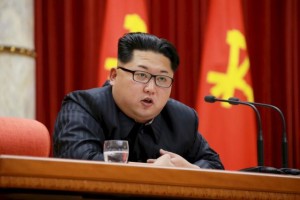 Kim Jong Un’s regime has become known for exaggerating its technical capabilities, but the continual combination of threats and boasts has become an irritating thorn in America’s diplomatic side. Some maintain that the country’s inability to follow through on its warnings is the primary reason that the severity of the threats seem to keep increasing.
Kim Jong Un’s regime has become known for exaggerating its technical capabilities, but the continual combination of threats and boasts has become an irritating thorn in America’s diplomatic side. Some maintain that the country’s inability to follow through on its warnings is the primary reason that the severity of the threats seem to keep increasing.
[North Korea’s making a lot of threats these days. How worried should we be?]
On Friday, North Korea’s state media reported that Kim ordered more nuclear tests, while the North’s Korean People’s Army warned in a statement Saturday that it would counter the drills by “liberat[ing] the whole of South Korea including Seoul . . . with an ultra-precision blitzkrieg strike of the Korean style.”
South Korea’s Defense Ministry urged Pyongyang to stop its threats and provocations. “If the North continues to make provocations despite the stern warnings made by our military, it is inevitable for us to roll out a strict response that may lead to the destruction of the Pyongyang regime,” South Korea’s Joint Chiefs of Staff said in a statement, according to the Yonhap News Agency.
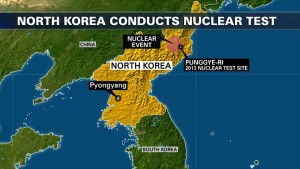
The website is an odd choice for making such a claim, given that it also carries reports about such topics as rabbit farming and domestically made school backpacks. North Korea’s newly developed hydrogen bomb “surpasses our imagination,” Cho is quoted as saying. “The H-bomb developed by the Soviet Union in the past was able to smash windows of buildings 1,000 kms away and the heat was strong enough to cause third-degree burns 100 kms away,” the report continued. (A thousand kilometers is about 625 miles; 100 kilometers, about 62.5 miles.)
[Punishing North Korea: A rundown on current sanctions]
Kim in January ordered North Korea’s fourth nuclear test and claimed that it was a hydrogen bomb, not a simple atomic one. But most experts are skeptical of the claim, saying the seismic waves caused by the blast were similar to those produced by the North’s three previous tests.
Then in February, Kim oversaw the launch of what North Korea said was a rocket that put a satellite into orbit, a move widely considered part of a long-range-ballistic-missile program.
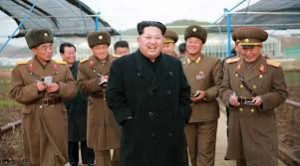 North Korea has made advances in its intercontinental-ballistic-missile program, and though experts generally conclude that the United States’ West Coast could be within reach, there has been no suggestion that the North would be able to hit the East Coast.
North Korea has made advances in its intercontinental-ballistic-missile program, and though experts generally conclude that the United States’ West Coast could be within reach, there has been no suggestion that the North would be able to hit the East Coast.
Many experts are also skeptical of the “miniaturized warhead” that Kim showed off last week during a visit to a nuclear weapons plant.
But Jeffrey Lewis, director of the East Asia nonproliferation program at the Middlebury Institute of International Studies at Monterey, warned against dismissing the claim too soon.
CONTENT FROM FX1983: The most dangerous year
A look back at panicked months in the Cold War.
“It does not look like U.S. devices, to be sure, but it is hard to know if aspects of the model are truly implausible or simply that North Korean nuclear weapons look different than their Soviet and American cousins,” Lewis wrote in an analysis for 38 North, a website devoted to North Korea. “The size, however, is consistent with my expectations for North Korea.”
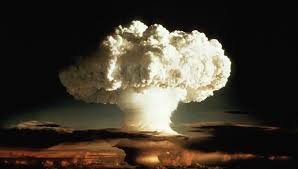 As international condemnation of the North’s acts mounted, culminating this month in the United Nations’ toughest sanctions yet against Pyongyang, Kim’s regime has become increasingly belligerent, firing missiles into the Sea of Japan — also known as the East Sea — and issuing a new threat or denunciation almost every day.
As international condemnation of the North’s acts mounted, culminating this month in the United Nations’ toughest sanctions yet against Pyongyang, Kim’s regime has become increasingly belligerent, firing missiles into the Sea of Japan — also known as the East Sea — and issuing a new threat or denunciation almost every day.
The sanctions coincide with annual spring drills between the U.S. and South Korean militaries, which Pyongyang considers a rehearsal for an invasion. The ongoing exercises are viewed as particularly antagonistic because special forces are practicing “decapitation strikes” that target Northern leaders and the destruction of Pyongyang’s nuclear and missile sites.
The bottom line for Americans is how seriously we should take North Korea’s threats. Well, technologically the threats are pretty empty. Then again, most of terrorism is based upon surprise and fear and the occasionale needle that might find its way through the haystack. Ultimately, we can’t put our faith in technology, military might or even psychological analysis. Our faith has to be in God and that means turning our lives over to him. Even then, the guarantee is not that something horrible will never happen, but that if it does, God will somehow help us to get through it. The faith is in believing that, once we turn our life over to Him, he has our ultimate best interest in mind.
For I know the plans I have for you,” declares the Lord, “plans to prosper you and not to harm you, plans to give you hope and a future. – Jeremiah 29:11
___




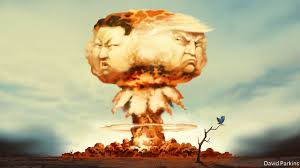


No Comment